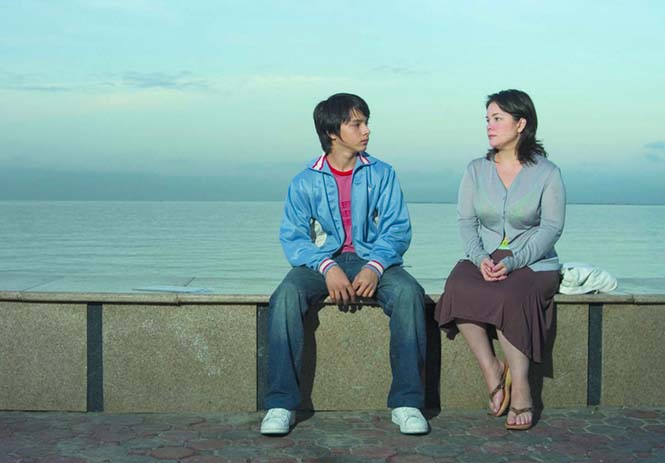David Olson’s “The Dust in Your Place” tells the story of a comic strip illustrator and a writer (Chaye Mogg and Boo Gabunada) talking about the latter’s fucked up relationships and where the former thinks the fuck-ups originate. That’s it, really, as this one tries to be a la “Before Sunrise” (and such films) that is dialogue-driven, wanting to “resolve” a (seemingly) major issue via… incessant chitchats.
This should be “warning” for those not into these kinds of films; though – obviously – this should be the “lure” for those who like films like this.
Still, we check if this works or not…
PROS
- Limited shots so we get to focus on the “deep” discourses of the characters. Meaning, you get to focus on what the characters are talking about, not on the “razzle dazzle” done by, say, Michael Bay’s trashy flicks.
- For a film shot in a small space (supposedly the writer’s unit), this film doesn’t feel… “stagnant” or claustrophobic, e.g. multiple camera shots, changes in perspectives, and changes in locations (like the kitchen, the living area, etc).
- Production design (Katrish Aristoki) is actually generally good, e.g. the small details like the drawings pasted on a cork board in the kitchen. And this is even if – for the life of me – I don’t know of any artist whose unit is designed like this (e.g. all those antique collections in the sala)…
- Not over-the-top acting; even if the issue discussed is… pettish.
CONS
- Olson actually claims he was inspired by “films that excel at the art of conversation, delivering cinematic entertainment with long and rich dialogue”. I’m not sure, though, if he was able to deliver the “rich dialogue” part here, even if the chat between the two characters is “long” indeed, e.g. redundant non-resolution comes to mind, particularly since… eventually, it seemed like the characters just gave up on what they’re talking about (screenwriter: Joem Antonio).
- Running for 20:00, a few people I watched this with were getting exasperated, saying it could be summed up with “Why didn’t we just fuck?”.
- This smoking onscreen has got to stop. Cinemalaya ought to ban it already; seriously… unless the film talks about its eventual harmful effects to everyone.
- As stated, it’s dialogue dependent; and this isn’t for everyone.
- Some “forced” storytelling – e.g. a character mentions “destroyed momentum”, which leads to another character saying “like that momentum that was destroyed earlier”. You can’t be more blatant than that…
- Very… conyo.
- The promotion of the Filipino’s dependence on “hiya” (what people will say) even if it fucks people’s lives. This is interesting considering the age of the filmmaker, who – you’d expect – won’t be as tied to this antiquated way of living. Also, this is supposed to give us an intelligent discourse on social norms (among others), and we end up caving to beliefs that – after thorough analysis – should no longer be heeded.
- For me at least, the false tip to put up with a jealous, nagging partner even if this person’s wrong, and giving up other relationships just to please the same person, just to live up to social expectations (e.g. eventually marrying). For a changing world where “me” is given as much importance than “them/their”, this sounds… dated (not just outright harmful).
IN THE END
If you’ve seen the Hollywood-wannabe “BuyBust”, this is a complete opposite, choosing to focus on words, WORDS, words to keep the film afloat. This isn’t for everyone, obviously (particularly in a world full of people with short attention span). But for me, this is actually… a gem, a good offering. Going further, I’d say it’s an approach that, hopefully, we see more in the local industry. Just please… tighten the discourses within the film.
“The Dust in Your Place” is part of the 17th edition of Cinemalaya Philippine Independent Film Festival, running until September 5 ktx.ph (https://www.ktx.ph/).





























































































